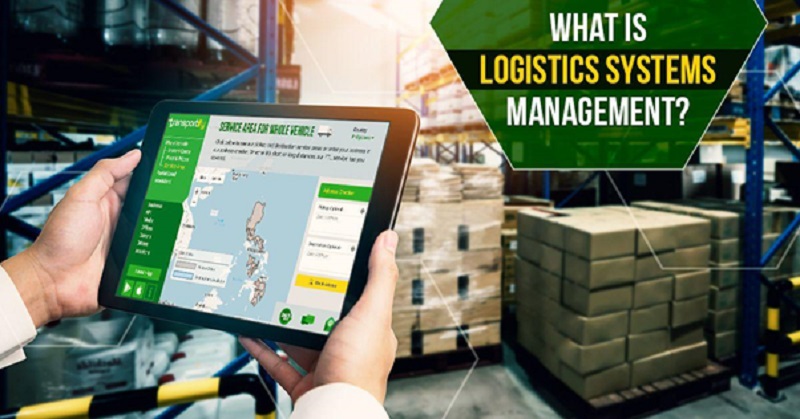Manual management of supply chain operations is becoming more inefficient, not only because it takes too much time and carries a high risk of human error, but also because it makes it hard to fully monitor, report in one place, scale, and improve operations. Good logistics management is not just about shipping cargo — it also means ongoing performance improvements, from quick freight rate calculation to real-time access to shipment data.
In this article, you’ll learn more about smooth logistics management solutions and see the benefits of automating your supply chain to meet your specific business needs.
What is a Logistics Management System?
Before understanding what a logistic parts management system is, let’s first look at the stages of planning and carrying out your supply chain:
- Inventory and warehouse management
- Finding and choosing suppliers based on good terms
- Order processing
- Transportation — cargo shipping or parcel delivery, and more
- Distribution of goods
These routine activities make up your logistics and trading process. Today, they can be handled with digital solutions such as systems for logistics automation and management.
Who needs logistics software development?
This includes carriers, freight forwarders, 3PL companies, warehouse operators, port authorities, production managers, online and offline retailers, software developers, analytics companies, and more. If your role is listed, the benefits below are important for improving your operations:
- Better use of resources to lower costs and raise profits
- Going digital to reduce manual work and expand operations
- Better supply chain visibility with safe real-time tracking
- Transparent booking and delivery processes
- Personalized services for better customer experience
- Easy planning and supply control
- Quick access to detailed analytics
- And many other features to fit your needs
Why does my business need Logistics Management Software?
| Module of digital logistics platforms | Purpose |
| Warehouse management system | Warehouse automation, inventory control, distribution management, and supply planning |
| Transport management system | Cost planning, visibility for each transport asset, route optimization, delivery reports, real-time tracking, customer communication, organized documentation |
| Customer order management system | Clear and complete order processing |
| Freight running | Managing tenders with good terms, transparent freight pricing, full visibility from booking to delivery |
| Reverse logistics | Reducing costs and offering better customer support |
| Logistics analytics | Collecting operational data and measuring KPIs |
Let’s take a closer look at logistics management software modules for better freight efficiency.
Core components of an LMS
Here are the main parts of a logistics management system that work together as a single tool for supply chain management:
- Inventory and warehouse systems
- Transportation Management System (TMS)
- Customer Order Management System (OMS)
- Freight running module
- Reverse logistics module
- Logistics analytics module
Warehouse management module
Warehouse management systems (WMS) help with inventory planning and optimization, warehouse operations control, accounting for services and tariffs, and managing warehouse assets.
- Transparent inventory management – Daily tasks like inventory allocation, consignment planning, and storage space use are made easier with better visibility and easy dashboard access.
- Cost-effective strategy – Keeping the right inventory levels without shortages or excess stock helps meet demand on time, increases return on assets, and reduces financial risks.
Transportation Management Systems (TMS)
- Enterprise fleet management – Track transport assets, set load status, destinations, prices, and other details for trucks, vessels, containers, wagons, trailers, and aircraft.
- Advanced operations planning – Adjust routes, schedule shipments, and ensure deliveries are on time. Automatically collect reliable data for better trade decisions.
- Carrier-shipper contracts management – Connect your transport systems to improve tendering, promote assets and tariffs, and reach targeted shipping requests.
- Real-time tracking – Integrate tracking tools for live asset location, analytics, order movement, and status updates by sea, air, and land.
Order Management System (OMS)
This system helps improve delivery flows, manage shipping routes, and avoid delays or lost goods. With booking management, changes and cancellations can be handled quickly. Every booking can be updated with new details and tracking information to reduce risks.
Freight running module
- Freight rates aggregation – Integrating a Freight Calculator allows you to compare costs, avoid hidden fees, and set accurate rates without time-consuming manual searches.
- All-round tracking – Track shipments by sea, air, rail, or road with a few clicks.
- Accurate monitoring data – View status updates, route changes, and cost-related details like demurrage for better decision-making.
Reverse logistics
- Simplified return process – Track returns, schedule acceptance, manage repairs, and redistribute goods.
- Improved customer experience – Monitor service quality, get feedback, and provide 24/7 client support.
Logistics analytics
Access reports on logistics providers, booking transparency, customer journey visibility, and freight management tools from a single dashboard. Analyze inbound and outbound operations, control trade results, and cut transportation costs.
Summary
A single logistics software that manages all steps is a key tool to automate, simplify, and track your entire supply chain in one place. Digital transformation gives you instant access to advanced analytics and data-driven insights.
Choose advanced supply chain management tools or request specific solutions tailored to your business goals for the best results.





